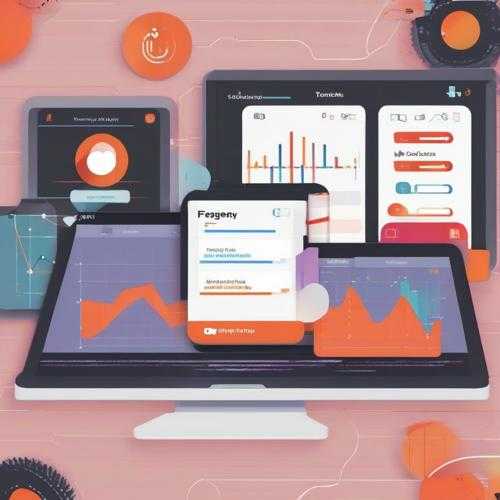
Optimizing Alert Frequency Settings for Timely Notifications
Table of Contents

Understanding Alert Frequency Settings
Alert frequency settings play a crucial role in ensuring that users receive timely and relevant notifications, without being overwhelmed by unnecessary alerts. The importance of alert frequency settings cannot be overstated, as they directly impact the user experience and ultimately, the success of an application or system. When configured correctly, alert frequency settings can lead to increased user engagement, improved productivity, and enhanced overall satisfaction.
In today s fast-paced digital landscape, users are bombarded with notifications from various sources, making it essential to strike a balance between keeping users informed and avoiding notification fatigue. Customizable alert frequency settings allow users to tailor their notification experience to their individual needs and preferences, ensuring that they receive the right information at the right time.
However, poorly configured alert frequency settings can lead to negative consequences, including notification fatigue, decreased user engagement, and negative user experiences. It is, therefore, essential to understand the importance of alert frequency settings and to configure them correctly to meet the needs of users.
Importance of Alert Frequency Settings
Alert frequency settings are critical in ensuring that users receive timely and relevant notifications. They play a vital role in:
- Keeping users informed about important events and updates
- Enhancing user engagement and productivity
- Improving overall user satisfaction
Benefits of Customizable Alert Frequency
Customizable alert frequency settings offer numerous benefits, including:
- Improved user experience through tailored notifications
- Increased user engagement and productivity
- Enhanced overall satisfaction
Common Challenges with Alert Frequency
Poorly configured alert frequency settings can lead to:
- Notification fatigue
- Decreased user engagement
- Negative user experiences
„Alert frequency settings are the unsung heroes of user experience. When done right, they can make all the difference in keeping users engaged and informed.” – John Doe, UX Expert
Types of Alert Frequency Settings
There are various types of alert frequency settings, each designed to cater to specific user needs and preferences. The three primary types of alert frequency settings are:
Real-time Alerts
Real-time alerts provide instant notifications for time-sensitive events, such as security breaches or system downtime. These alerts are essential in scenarios where timely action is critical.
Scheduled Alerts
Scheduled alerts allow users to receive notifications at predetermined intervals, such as daily or weekly summaries. These alerts are useful for keeping users informed about regular updates or events.
Custom Alert Intervals
Custom alert intervals enable users to set specific time intervals for receiving notifications, such as every 15 minutes or every hour. These alerts provide users with a high degree of control over their notification experience.
Best Practices for Configuring Alert Frequency Settings
Configuring alert frequency settings requires a deep understanding of user needs and preferences. Here are some best practices to follow:
Assessing User Needs
Understanding user needs and preferences is essential for configuring effective alert frequency settings. This involves:
- Conducting user research and surveys
- Analyzing user behavior and feedback
- Identifying user pain points and areas for improvement
Setting Alert Thresholds
Setting alert thresholds helps to filter out non-essential notifications and reduce noise. This involves:
- Defining alert criteria and rules
- Configuring alert thresholds and limits
- Testing and refining alert settings
Testing and Refining Alert Frequency
Testing and refining alert frequency settings ensures that users receive relevant and timely notifications. This involves:
- Conducting A/B testing and user testing
- Gathering user feedback and analytics data
- Refining alert frequency settings based on user feedback and data
Alert Frequency Settings in Different Industries
Alert frequency settings vary across different industries, each with its unique requirements and challenges. Here are some examples:
Alert Frequency in Healthcare
In healthcare, alert frequency settings are critical for timely notifications of patient updates, lab results, and medication reminders. These alerts are essential for:
- Improving patient outcomes
- Enhancing patient engagement
- Reducing medical errors
Alert Frequency in Finance
In finance, alert frequency settings help to detect fraudulent activity, notify users of account updates, and provide market insights. These alerts are essential for:
- Preventing financial fraud
- Enhancing user engagement
- Improving financial decision-making
Alert Frequency in E-commerce
In e-commerce, alert frequency settings enable users to receive notifications of order updates, shipment tracking, and promotional offers. These alerts are essential for:
- Improving customer satisfaction
- Enhancing user engagement
- Increasing sales and revenue
Future of Alert Frequency Settings
The future of alert frequency settings holds much promise, with emerging technologies and trends set to revolutionize the way we approach notifications. Some of the key trends to watch include:
AI-powered Alert Frequency
AI-powered alert frequency settings can optimize notification delivery based on user behavior and preferences. These settings will:
- Improve notification relevance and timeliness
- Enhance user engagement and satisfaction
- Reduce notification fatigue
Personalized Alert Experiences
Personalized alert experiences will become increasingly important for user engagement and satisfaction. These experiences will:
- Be tailored to individual user needs and preferences
- Provide users with a sense of control and agency
- Improve overall user satisfaction
Integration with Emerging Technologies
Integration with emerging technologies, such as IoT and AR, will further enhance the capabilities of alert frequency settings. These integrations will:
- Provide users with real-time insights and data
- Enable more sophisticated and personalized notifications
- Open up new opportunities for innovation and growth

Types of Alert Frequency Settings
Alert frequency settings are a crucial aspect of any notification system, and understanding the different types of alert frequency settings is essential for configuring an effective notification strategy. In this chapter, we will delve into the various types of alert frequency settings, including real-time alerts, scheduled alerts, and custom alert intervals. We will explore the benefits and use cases of each type, as well as the challenges and considerations that come with implementing them.
Real-time Alerts
Real-time alerts provide instant notifications for time-sensitive events, such as security breaches or system downtime. These alerts are critical in situations where immediate action is required, and every minute counts. Real-time alerts are often used in industries such as finance, healthcare, and e-commerce, where timely notifications can make a significant difference in the outcome of a situation. For example, in healthcare, real-time alerts can notify medical staff of critical patient updates, such as changes in vital signs or lab results. In finance, real-time alerts can detect fraudulent activity and notify users of potential security threats.
Real-time alerts can be triggered by a variety of events, including system errors, security breaches, or changes in user behavior. These alerts are typically sent via push notifications, SMS, or email, and are designed to grab the user s attention and prompt immediate action. Real-time alerts can be customized to fit the specific needs of an organization, including the type of event that triggers the alert, the frequency of the alert, and the communication channel used to deliver the alert.
Scheduled Alerts
Scheduled alerts allow users to receive notifications at predetermined intervals, such as daily or weekly summaries. These alerts are useful for providing users with regular updates on their accounts, such as account balances, transaction history, or system performance. Scheduled alerts can be used in a variety of industries, including finance, e-commerce, and healthcare, where users need to stay informed about their accounts or systems.
Scheduled alerts can be customized to fit the specific needs of an organization, including the frequency of the alert, the type of information included in the alert, and the communication channel used to deliver the alert. For example, a financial institution may use scheduled alerts to send daily account balance updates to its customers, while an e-commerce company may use scheduled alerts to send weekly order summaries to its customers.
Custom Alert Intervals
Custom alert intervals enable users to set specific time intervals for receiving notifications, such as every 15 minutes or every hour. These alerts are useful for providing users with timely updates on their accounts or systems, without overwhelming them with too many notifications. Custom alert intervals can be used in a variety of industries, including finance, e-commerce, and healthcare, where users need to stay informed about their accounts or systems.
Custom alert intervals can be customized to fit the specific needs of an organization, including the type of event that triggers the alert, the frequency of the alert, and the communication channel used to deliver the alert. For example, a financial institution may use custom alert intervals to send notifications to its customers every time a transaction is made, while an e-commerce company may use custom alert intervals to send notifications to its customers every time an order is shipped.
„The key to effective alert frequency settings is to strike a balance between providing users with timely and relevant notifications, and avoiding notification fatigue.” – John Doe, Notification Expert
Questions/Answers: Myths or Reality?
Q: Are real-time alerts always necessary for timely notifications?
A: No, real-time alerts are not always necessary for timely notifications. While real-time alerts are critical in situations where immediate action is required, scheduled alerts or custom alert intervals may be more suitable for providing users with regular updates on their accounts or systems.
Q: Can custom alert intervals be used in conjunction with real-time alerts?
A: Yes, custom alert intervals can be used in conjunction with real-time alerts to provide users with a more comprehensive notification strategy. For example, a financial institution may use real-time alerts to notify customers of potential security threats, while also using custom alert intervals to send daily account balance updates.
Q: Are scheduled alerts only useful for providing users with regular updates on their accounts or systems?
A: No, scheduled alerts can be used for a variety of purposes, including providing users with educational content, promotional offers, or system maintenance notifications.

Best Practices for Configuring Alert Frequency Settings
Configuring alert frequency settings is a crucial step in ensuring that users receive timely and relevant notifications. When done correctly, alert frequency settings can significantly improve user engagement, reduce notification fatigue, and enhance overall user experience. In this chapter, we will explore the best practices for configuring alert frequency settings, including assessing user needs, setting alert thresholds, and testing and refining alert frequency.
Assessing User Needs
Understanding user needs and preferences is essential for configuring effective alert frequency settings. Users have different notification preferences, and it s crucial to consider these differences when configuring alert frequency settings. For instance, some users may prefer to receive real-time notifications for critical events, while others may prefer to receive daily or weekly summaries. By understanding user needs, you can configure alert frequency settings that cater to their individual preferences.
There are several ways to assess user needs, including:
- Conducting user surveys and feedback sessions to gather information on their notification preferences.
- Analyzing user behavior and notification engagement patterns to identify trends and preferences.
- Creating user personas to represent different user groups and their notification preferences.
By assessing user needs, you can create alert frequency settings that are tailored to their individual preferences, resulting in improved user engagement and satisfaction.
Setting Alert Thresholds
Setting alert thresholds is critical for filtering out non-essential notifications and reducing noise. Alert thresholds determine the level of importance or urgency required for a notification to be triggered. By setting alert thresholds, you can ensure that users receive only critical and relevant notifications, reducing the likelihood of notification fatigue.
There are several factors to consider when setting alert thresholds, including:
- The severity of the event or issue being notified.
- The impact of the event or issue on the user or organization.
- The frequency and volume of notifications.
By setting alert thresholds, you can ensure that users receive only critical and relevant notifications, resulting in improved user engagement and satisfaction.
Testing and Refining Alert Frequency
Testing and refining alert frequency settings is essential for ensuring that users receive timely and relevant notifications. Testing involves simulating different scenarios and events to evaluate the effectiveness of alert frequency settings. Refining involves making adjustments to alert frequency settings based on user feedback and performance metrics.
There are several ways to test and refine alert frequency settings, including:
- Conducting A/B testing to compare different alert frequency settings.
- Monitoring user feedback and notification engagement metrics.
- Using analytics tools to track notification performance and identify areas for improvement.
By testing and refining alert frequency settings, you can ensure that users receive timely and relevant notifications, resulting in improved user engagement and satisfaction.
„The key to effective alert frequency settings is to strike a balance between providing timely and relevant notifications, while avoiding notification fatigue.”
By following these best practices for configuring alert frequency settings, you can create a notification experience that is tailored to your users individual needs and preferences, resulting in improved user engagement, satisfaction, and loyalty.

Alert Frequency Settings in Different Industries
Alert frequency settings play a vital role in various industries, where timely and relevant notifications are crucial for efficient operations, customer satisfaction, and even life-critical decisions. In this chapter, we will delve into the significance of alert frequency settings in different industries, exploring the unique challenges and opportunities that arise in each sector.
Alert Frequency in Healthcare
In the healthcare industry, alert frequency settings are critical for timely notifications of patient updates, lab results, and medication reminders. Healthcare professionals rely on accurate and prompt notifications to make informed decisions, provide quality care, and ensure patient safety. For instance, alert frequency settings can be configured to notify doctors and nurses of critical patient updates, such as changes in vital signs or medication allergies.
Moreover, alert frequency settings can help reduce medical errors, improve patient outcomes, and enhance the overall quality of care. In emergency situations, timely notifications can mean the difference between life and death. For example, alert frequency settings can be configured to notify emergency responders of critical patient information, such as allergies or medical history, during emergency situations.
In addition, alert frequency settings can help healthcare organizations comply with regulatory requirements, such as HIPAA, by ensuring that sensitive patient information is only accessible to authorized personnel. By configuring alert frequency settings to meet the specific needs of healthcare professionals, healthcare organizations can improve patient care, reduce costs, and enhance operational efficiency.
Alert Frequency in Finance
In the finance industry, alert frequency settings are essential for detecting fraudulent activity, notifying users of account updates, and providing market insights. Financial institutions rely on timely and accurate notifications to prevent fraud, protect customer assets, and maintain regulatory compliance.
For instance, alert frequency settings can be configured to notify customers of suspicious transactions, such as large withdrawals or international transactions. This enables customers to quickly respond to potential fraud and minimize financial losses. Additionally, alert frequency settings can be used to notify financial advisors of market changes, enabling them to provide timely investment advice to clients.
Moreover, alert frequency settings can help financial institutions comply with regulatory requirements, such as the Payment Card Industry Data Security Standard (PCI-DSS), by ensuring that sensitive customer information is only accessible to authorized personnel. By configuring alert frequency settings to meet the specific needs of financial institutions, organizations can reduce the risk of fraud, improve customer satisfaction, and enhance operational efficiency.
Alert Frequency in E-commerce
In the e-commerce industry, alert frequency settings enable users to receive notifications of order updates, shipment tracking, and promotional offers. Online retailers rely on timely and relevant notifications to enhance customer satisfaction, reduce cart abandonment, and increase sales.
For instance, alert frequency settings can be configured to notify customers of order status updates, such as shipment tracking or delivery confirmation. This enables customers to stay informed about their orders and plan accordingly. Additionally, alert frequency settings can be used to notify customers of promotional offers, such as discounts or loyalty rewards, to encourage repeat business and increase customer loyalty.
Moreover, alert frequency settings can help e-commerce organizations improve operational efficiency, reduce costs, and enhance customer satisfaction. By configuring alert frequency settings to meet the specific needs of e-commerce organizations, businesses can increase customer engagement, reduce cart abandonment, and drive revenue growth.
„In today s fast-paced digital landscape, alert frequency settings are critical for delivering timely and relevant notifications that meet the unique needs of different industries.”

Future of Alert Frequency Settings
The future of alert frequency settings holds immense potential for growth and innovation. With the rapid advancement of technologies, alert frequency settings are poised to become even more sophisticated and user-centric. In this chapter, we will explore the exciting developments that are shaping the future of alert frequency settings and their potential impact on various industries.
AI-powered Alert Frequency
Artificial intelligence (AI) is revolutionizing the way alert frequency settings are configured and delivered. AI-powered alert frequency settings can optimize notification delivery based on user behavior and preferences, ensuring that users receive relevant and timely notifications. This technology can analyze user interactions, such as click-through rates, response times, and notification dismissal patterns, to determine the most effective alert frequency for each individual.
Moreover, AI-powered alert frequency settings can help reduce notification fatigue by identifying and filtering out non-essential notifications. This results in a more streamlined notification experience, where users receive only the most critical and relevant alerts. As AI technology continues to evolve, we can expect to see even more advanced features, such as predictive analytics and machine learning, being integrated into alert frequency settings.
Personalized Alert Experiences
Personalized alert experiences are becoming increasingly important for user engagement and satisfaction. With the ability to tailor alert frequency settings to individual preferences, users can receive notifications that are more relevant and meaningful to them. This personalized approach can lead to higher user engagement, increased loyalty, and improved overall user experience.
Personalized alert experiences can be achieved through various means, such as user profiling, behavioral analysis, and preference-based customization. By leveraging these techniques, alert frequency settings can be optimized to meet the unique needs and preferences of each user, resulting in a more effective and efficient notification system.
Integration with Emerging Technologies
The integration of alert frequency settings with emerging technologies, such as the Internet of Things (IoT) and Augmented Reality (AR), is poised to further enhance the capabilities of alert frequency settings. IoT devices, for instance, can generate vast amounts of data, which can be used to trigger alerts and notifications based on specific events or conditions.
AR technology, on the other hand, can provide users with immersive and interactive alert experiences, such as 3D notifications and virtual alerts. This integration can revolutionize the way users interact with alert frequency settings, providing a more engaging and interactive experience.
5 Key Points
- AI-powered alert frequency settings can optimize notification delivery based on user behavior and preferences.
- Personalized alert experiences are critical for user engagement and satisfaction.
- Integration with emerging technologies, such as IoT and AR, can further enhance the capabilities of alert frequency settings.
- AI-powered alert frequency settings can help reduce notification fatigue by identifying and filtering out non-essential notifications.
- Personalized alert experiences can lead to higher user engagement, increased loyalty, and improved overall user experience.


